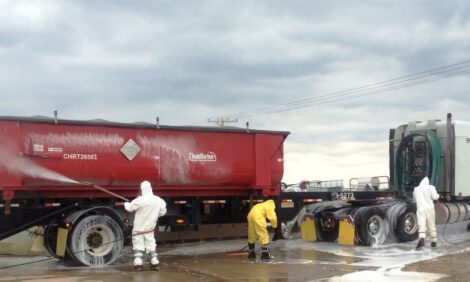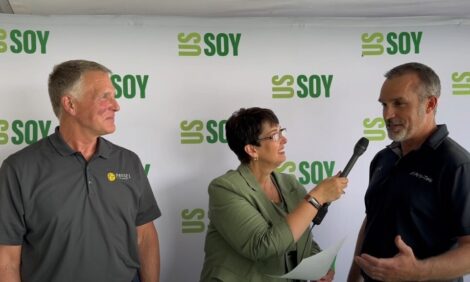



Economic position of the farming industry
By the Department for Environment, Food and Rural Affairs - This report provides regularly updated economic and statistical analysis of the profitability of the pig farming industry. It builds on, and in some cases updates, the analysis published in the Strategy for Sustainable Farming and Food.Background
 It describes aggregate incomes across the whole industry, profitability, prices and trade in the main enterprises, farm business incomes and an indication of agriculture’s contribution to the regional and rural economy. Other topical items are incorporated as appropriate.
It describes aggregate incomes across the whole industry, profitability, prices and trade in the main enterprises, farm business incomes and an indication of agriculture’s contribution to the regional and rural economy. Other topical items are incorporated as appropriate.
The timing and frequency of updates are driven by when data becomes available. The report is updated during February, April, July, September and November and made available in the early part of the subsequent month.
What’s New?
Revised 5 year projections for aggregate agricultural incomes (TIFF) to reflect changes in the sterling-euro exchange rate
Analysis of the economic effects of the CAP reform agreement of 26 June (see page 21)
Headline results of a Survey of Agriculture Computer Usage.
Commodity prices and margins are updated where appropriate.
Aggregate Incomes Across the Whole Farming Industry
Total income from farming in the UK in 2002 is estimated to be £2.36 billion, a rise of 15 per cent (or 14 per cent in real terms) over 2001. Because of a reduction in the number of farmers, total income from farming per full time person equivalent is estimated to rise in 2002 by 19 per cent or by 18 per cent in real terms to £11,107. Total income from farming more than doubled between 1990 and 1995. Whilst it is now 62 per cent below its peak in 1995 it is 16 per cent below the 1990 level.
The long term trend in income has been downwards although it rose and then fell dramatically in the nineties due to changes in exchange rates, world commodity prices and the impact of BSE.
The overall increase in income in 2002 masks variation across the sectors. The value of output of cereals rose as production recovered even though prices were lower. Prices received by farmers for milk were lower. The output of cattle and sheep recovered following foot and mouth disease. The value of output of potatoes was down due to lower prices.
Beyond 2002, forecasts of the key drivers of future business prospects – in particular commodity prices and exchange rates – are highly uncertain.
There has been a welcome recovery in the Euro so far in 2003. It has strengthened by 9% relative to £ since the beginning of the year. This has lead to a rise in prices across a range of commodities and will result in higher direct subsidy payments. Most macro economic forecasters are expecting this recovery to be sustained and this has now been built into the baseline projection in the chart below.
The chart shows a further increase in incomes is expected for 2003 due primarily to the effects of the exchange rate. However, there remains a large level of uncertainty at this stage with this forecast due to the potential impact of unknown factors between now and the end of the year (including further changes in the exchange rate and weather effects upon this year’s harvest).
Beyond 2003, there is likely to be only a modest recovery in commodity markets over the medium term future. Note that as yet the projections shown below do not incorporate the impact of the CAP MTR outcome which will start to impact towards the end of this projection period. These will be built into the next version of these projections which will be produced in September 2003.
Projections are also provided to illustrate the effects of further movements in the exchange rate over and above the appreciation of the Euro seen so far this year. The scenarios shown illustrate the effect of a further 5% appreciation in the value of the Euro and the impact of the Euro fallen back to 62p (the average level seen during the 2000-2002 period).
The other key driver of farm incomes is productivity and if the UK’s lagging productivity performance could be reversed, by sustaining exceptionally high rates of productivity growth which have been achieved recently (under severe financial pressure), income per person could show nearly a threefold increase by 2007 from the low base of 2000. The numbers of farmers (and partners and directors) is projected to fall by 20 per cent under baseline assumptions and by 30 per cent under the high productivity assumptions.
Profitability in Key Sectors
Profitability in the key sectors is measured by the net margin; this provides the return to managerial labour and the return on capital.
Pigs

net margin for the year ending September 2002 fell from £1.40 per pig to minus £1.00. This was mainly due to a reduction in pig prices of around 3p/kg over the year and a slightly lower dead carcase weight. Total costs remained broadly similar as only a small decrease in feed price was offset by increased replacement charges following the foot and mouth outbreak.
In Q4 2002 net margins were again lower due to a further fall in pig prices resulting in a reduced output. This was partially offset by reduced costs, particularly feed, as cheaper cereals became available.
At current pigmeat prices and levels of production, average margins have moved back into positive figures for the first part of 2003.
Prices reached their highest levels since Autumn 1997, and are currently around 110 p/kg/dw. Supplies remain tight, currently running around 7 per cent lower than for the same period in 2002.
Slaughter levels and production levels are down compared to 2002 although an increase in carcase weights has partially compensated for the decrease in slaughter levels.
Pork imports have exceeded exports (apart from 1997 and 1998) and the
divergence has grown in recent years.

To read the full report, including tables, please click here
Source: Defra - July 2003






